Answered step by step
Verified Expert Solution
Question
1 Approved Answer
Australia experienced approximately linear population growth from 1960 to 2010. On the other hand, Afghanistan was torn by warfare in the 1900s and did not
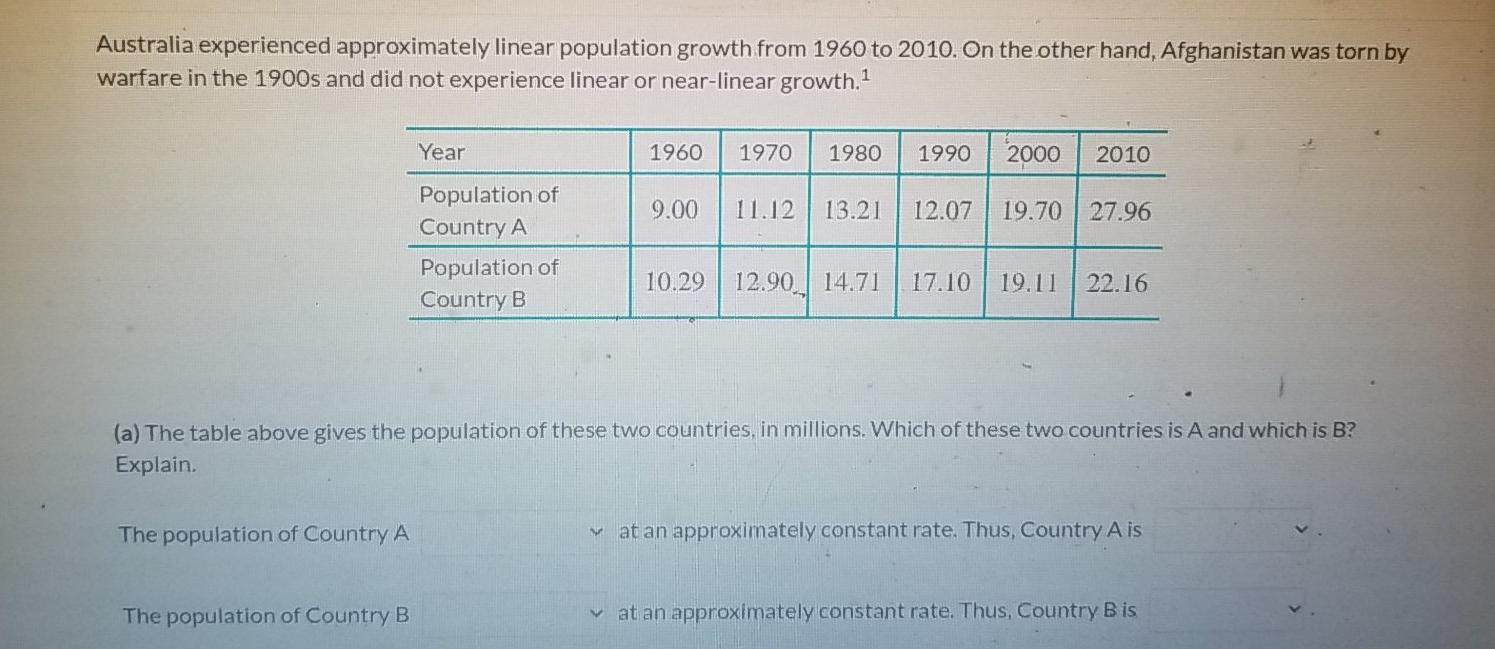
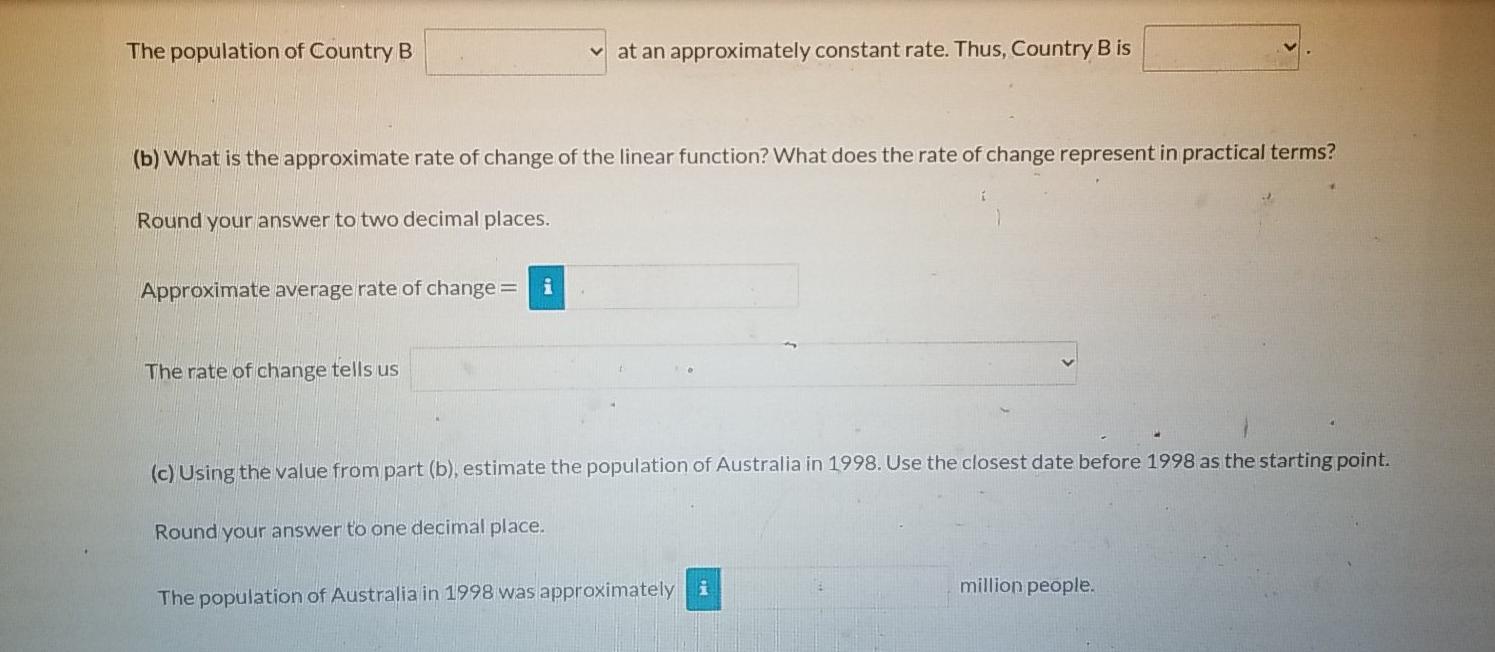
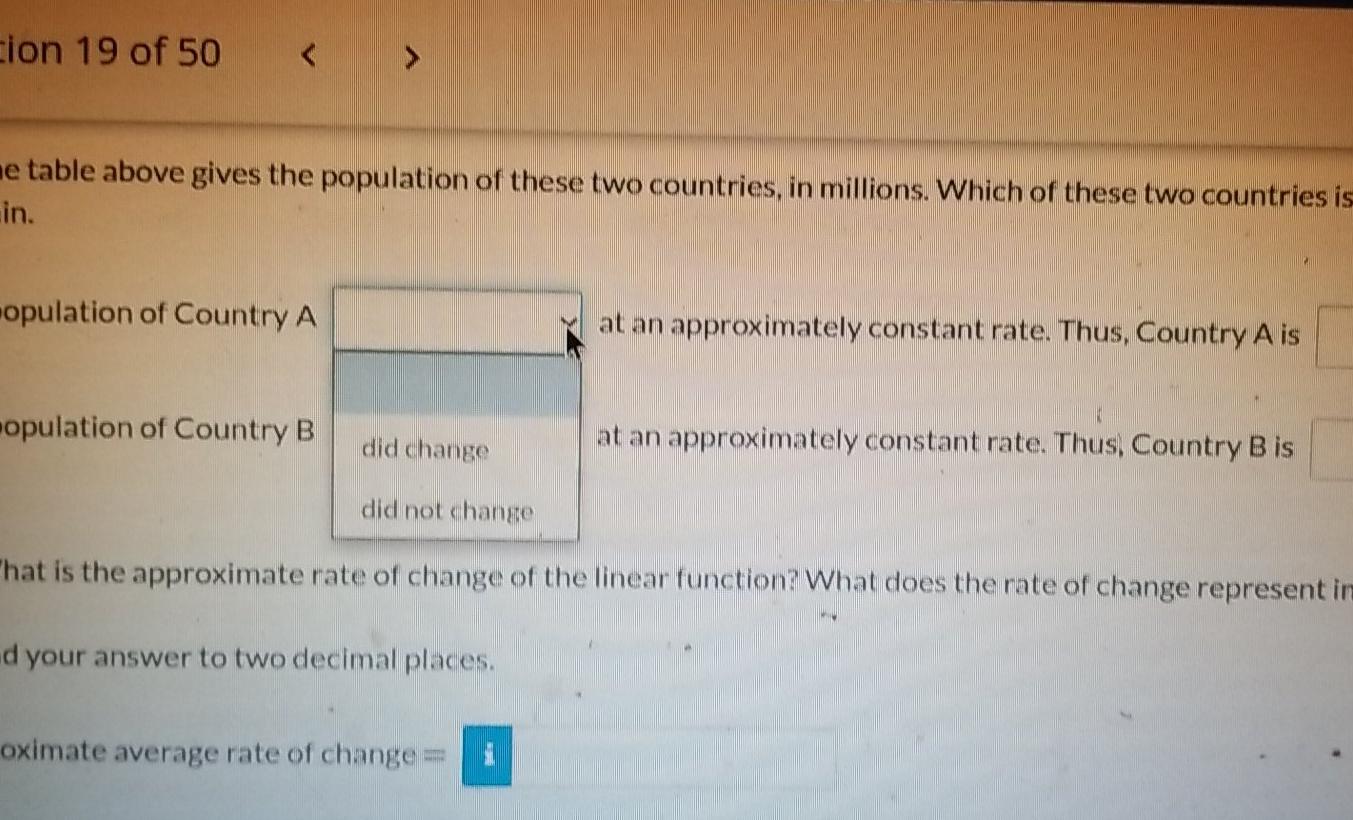
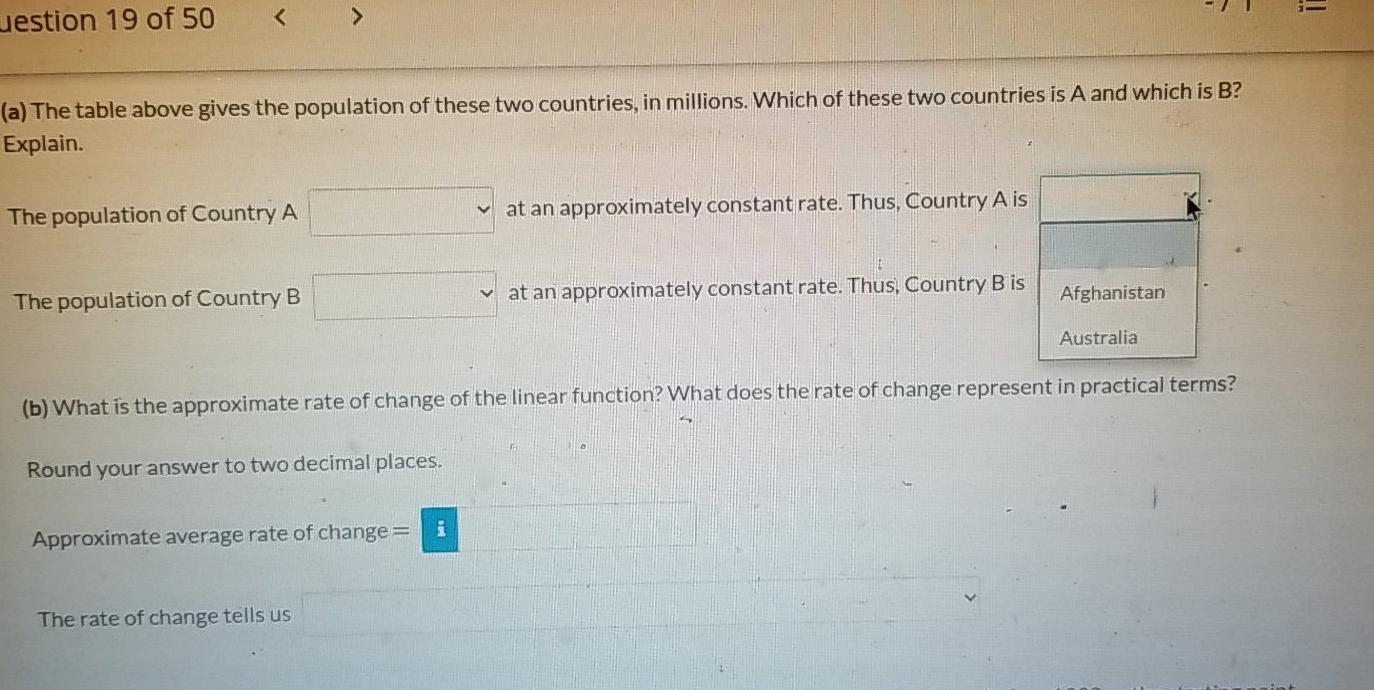

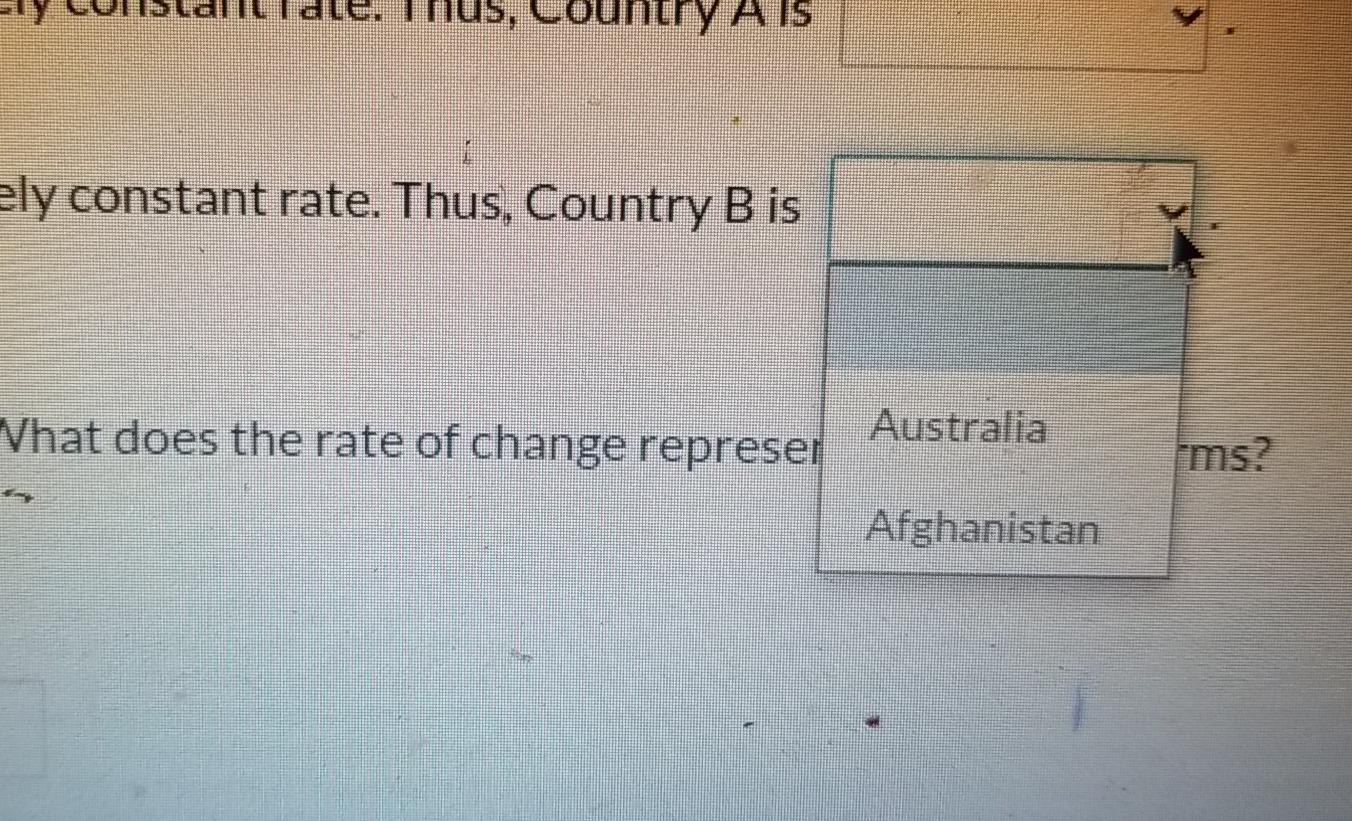
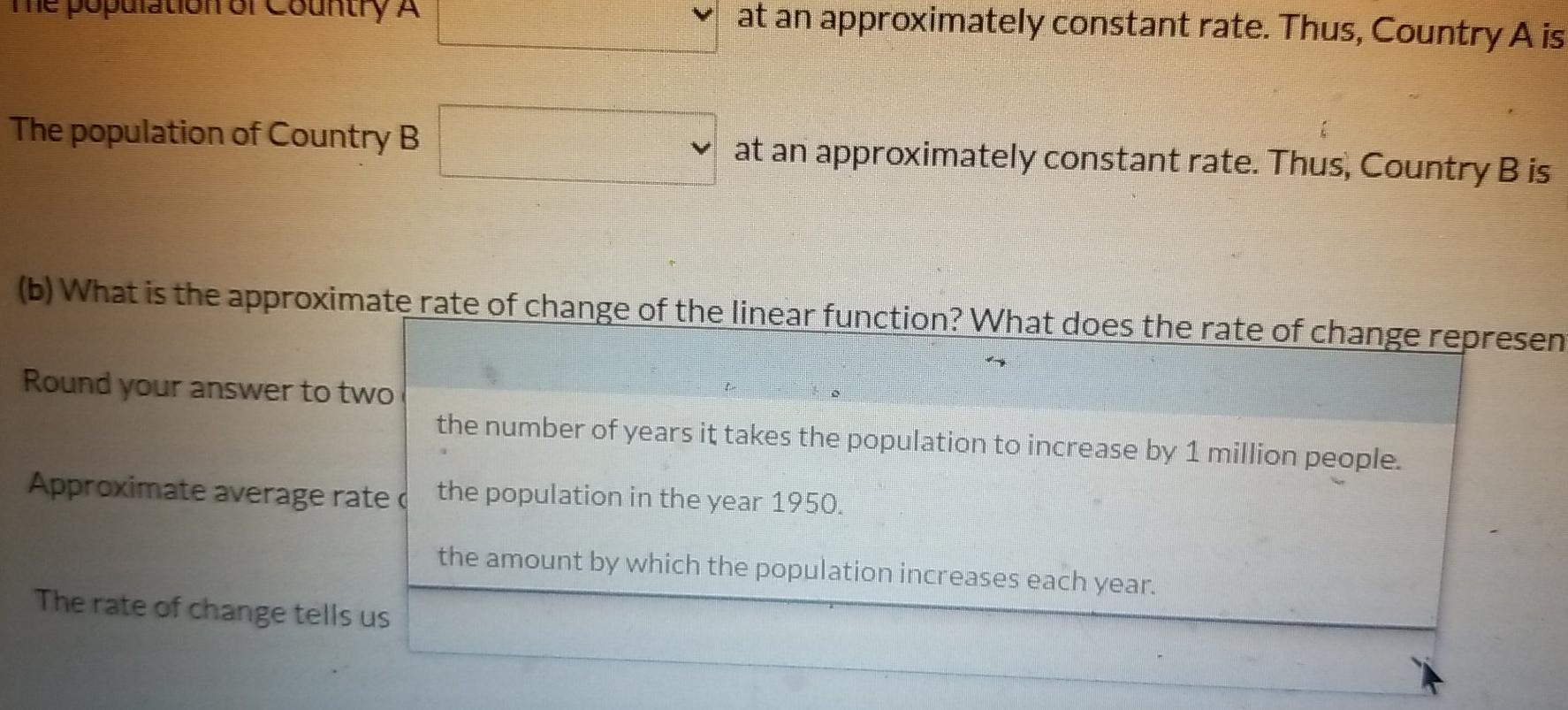
Australia experienced approximately linear population growth from 1960 to 2010. On the other hand, Afghanistan was torn by warfare in the 1900s and did not experience linear or near-linear growth.1 Year 1960 1970 1980 1990 2000 2010 9.00 11.12 13.21 12.07 19.70 27.96 Population of Country A Population of Country B 10.29 12.90 / 14.71 17.10 19.11 22.16 (a) The table above gives the population of these two countries, in millions. Which of these two countries is A and which is B? Explain. The population of Country A m at an approximately constant rate. Thus, Country Ais The population of Country B at an approximately constant rate. Thus, Country B is The population of Country B at an approximately constant rate. Thus, Country B is (b) What is the approximate rate of change of the linear function? What does the rate of change represent in practical terms? Round your answer to two decimal places. Approximate average rate of change = i The rate of change tells us (c) Using the value from part (b), estimate the population of Australia in 1998. Use the closest date before 1998 as the starting point. Round your answer to one decimal place. million people. The population of Australia in 1998 was approximately i cion 19 of 50 ne table above gives the population of these two countries, in millions. Which of these two countries is in. opulation of Country A at an approximately constant rate. Thus, Country A is opulation of Country B did change at an approximately constant rate. Thus, Country B is did not change That is the approximate rate of change of the linear function? What does the rate of change represent in d your answer to two decimal places. oximate average rate of change - uestion 19 of 50 (a) The table above gives the population of these two countries, in millions. Which of these two countries is A and which is B? Explain. The population of Country A at an approximately constant rate. Thus, Country A is The population of Country B at an approximately constant rate. Thus, Country B is Afghanistan Australia (b) What is the approximate rate of change of the linear function? What does the rate of change represent in practical terms? Round your answer to two decimal places. Approximate average rate of change= The rate of change tells us lation of Country A at an approximately constant lation of Country B at an approximately constant e linear function? What does the did not change is the approximate ra did change our answer to two decimal places. mate average rate of change = IUS, ountry AIS 3 ely constant rate. Thus, Country B is Vhat does the rate of change represer Australia ims? Afghanistan at an approximately constant rate. Thus, Country A is The population of Country B at an approximately constant rate. Thus, Country B is (b) What is the approximate rate of change of the linear function? What does the rate of change represen Round your answer to two the number of years it takes the population to increase by 1 million people. Approximate average rate the population in the year 1950. the amount by which the population increases each year. The rate of change tells us
Step by Step Solution
There are 3 Steps involved in it
Step: 1

Get Instant Access to Expert-Tailored Solutions
See step-by-step solutions with expert insights and AI powered tools for academic success
Step: 2

Step: 3

Ace Your Homework with AI
Get the answers you need in no time with our AI-driven, step-by-step assistance
Get Started


